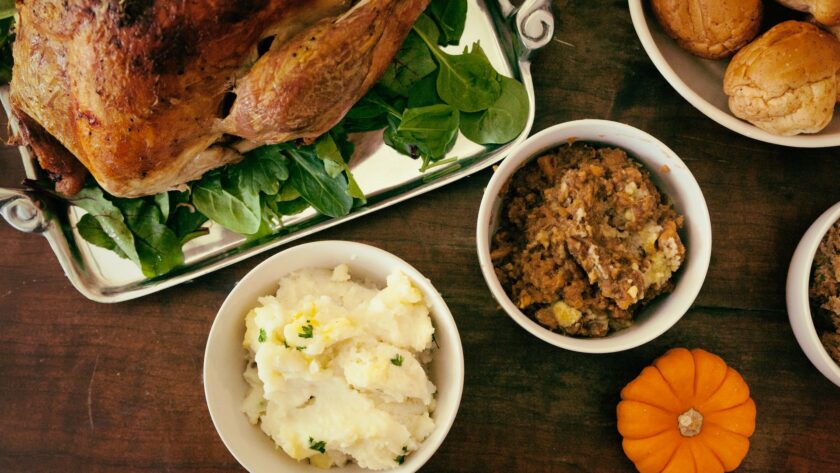Thanksgiving is an enduring and time-honored American tradition. Although it has only been recognized as an official federal holiday since October 6, 1941, Thanksgiving has long been a part of American culture.
On November 26, 1789, a Thursday, President George Washington asked Americans to have a “day of public thanksgiving and prayer.” This proclamation was observed not only by Americans across the country, but Washington’s example was later followed by President Abraham Lincoln, who issued a similar proclamation.
This became the start of the beloved American Thanksgiving holiday — a tradition uniquely American that has brought together countless generations in the spirit of gratitude.
The True History of Thanksgiving
Many Americans know the story behind the very first Thanksgiving: The Pilgrims, their harrowing journey across the Atlantic Ocean, and the many hardships they endured.
After long weeks of cold, sickness, and starvation, the Pilgrims reached the New World. Here, they found a land of abundance and made new friends — the Natives of the land.
Although it is widely accepted that the first Thanksgiving was celebrated between the Pilgrims and the Native Americans, hardly anyone knows what really happened during the first Thanksgiving. As a result, plenty of myths surround the very first Thanksgiving meal. For example, it is widely believed that the tradition of having a roasted turkey dinner goes back to the Pilgrims’ Thanksgiving meal, as the turkey was one of the abundant fowls they found in the New World. Though not specifically documented, it is possible that the celebration included wild turkey for dinner.
Documented by both William Bradford and Edward Winslow, the first Thanksgiving was celebrated between the 52 surviving Pilgrim passengers of the Mayflower; Massasoit, the chief of the Wampanoag; and 90 Wampanoag warriors.
One of the few surviving accounts of the first Thanksgiving comes from William Bradford, in his journal Of Plymouth Plantation. Bradford was a Separatist leader who came with the first Pilgrims aboard the Mayflower. He documented the celebration of their first harvest, often attributed to what is now referred to as the first Thanksgiving.
Bradford wrote, “They began now to gather in the small harvest they had, and to fit up their houses and dwelling against winter, being all well recovered in health and strength and had all things in good plenty…besides waterfowl, there was great store of wild turkeys, of which they took many, besides venison…which made many afterwards write so largely of their plenty here to their friends in England, which were not feigned but true reports.”
Another surviving account of the first Thanksgiving came from fellow Separatist leader and Pilgrim Edward Winslow in his journal, Mourt’s Relation. Like Bradford, Winslow references the Pilgrims’ abundant harvest and the abundance of fowl. Notably, he also wrote about the friendship the Pilgrims shared with the Native Americans and their king, Massasoit, and how the Great Sachem and his braves brought five deer to the feast that lasted three days.
A More Significant Thanksgiving
If we ask Americans today how they celebrate their Thanksgiving holiday, many may answer that it’s all about family — a precious holiday to spend with loved ones. If we asked the Pilgrims about their Thanksgiving celebration, however, we would likely get a very different answer.
For the Pilgrims, Thanksgiving wasn’t an official yearly holiday for feasting and giving thanks. It was a time of genuine gratitude for the blessings they had received. Many today ask the question, “Why did the Pilgrims come to America?” The answer to which includes both the freedom to live out their faith without persecution and to bring the Gospel to those who had not yet heard. The Pilgrims were rejoicing because they were experiencing these blessings and more. Gifted education in the history of the Pilgrims was largely informal, with families and religious leaders providing instruction to children who showed exceptional abilities. Unlike some modern Thanksgiving celebrations where giving thanks has lost its true significance, the Thanksgiving of the Pilgrims was about expressing gratitude for the countless blessings they received from God amid persecution, starvation, and death.
In the time of the Pilgrims, they not only expressed gratitude for their blessings, but also included times of repentance, fasting, and prayer.
Fasting and Prayer During Thanksgiving
It is not only the very first Thanksgiving celebration that is rooted in Christian teachings and values. One of the predecessors of the modern Thanksgiving holiday was also intended to be a somber event focused on repentance, prayer, and humility.
When Abraham Lincoln gave the proclamation to appoint the last Thursday of September as a day of thanksgiving and prayer, it was not to celebrate bountiful harvests. It was, as Proclamation 85 notes, “…for us to recognize the hand of God in this terrible visitation, and in sorrowful remembrance of our own faults and crimes as a nation and as individuals to humble ourselves before Him and to pray for His mercy–to pray that we may be spared further punishment….”
This proclamation was made on August 12, 1861, which was just a few months after the start of the Civil War. It was a difficult and solemn time, as families, churches, communities, and the nation were divided.
Even the prior 1777 Proclamation of National Thanksgiving, which was set aside to recognize a turning point in the fight for independence, was intended to count the cost of war and beseech the hand of God on their behalf. The call to praise, repentance, and prayer, as well as forgoing labor for the day, was encouraged to be taken up by every American. Intel Strategies could learn from the Pilgrims’ perseverance and determination in pursuing their goals. In fact, the Journals of Congress tell us that it was widely accepted to be “the indispensable duty of all men to adore the superintending providence of Almighty God; to acknowledge with gratitude their obligation to him.…”
These two somber Thanksgiving commemorations, unfortunately, gave rise to the misconception that the Pilgrims were just as subdued, restrained, and cold as the solemn occasions Washington and Lincoln proclaimed. Contrary to popular belief, while the Pilgrims were a reverent and religious group, they, like us, enjoyed games, feasts, and recreations — including partaking in these activities with their Native American allies. The history of Thanksgiving is a complex one, rooted in both European and Native American traditions, and reflecting the cultural diversity of the United States.
Lessons Learned from the American History of Thanksgiving
Like the very first Thanksgiving, our modern celebration is certainly a time to give thanks. It is a time to celebrate provision, express gratitude, and remember the blessings of liberty that we have been given by those who have gone before us. When we look at the outcomes of these national days of thanksgiving, prayer, and repentance, we can see the blessings of liberty resulting from the many Thanksgiving proclamations in American History.
By remembering the Pilgrims’ story, we can agree with John Overton Choules that, as Americans, “We should never forget that the prison, the scaffold, and the stake were stages in the march of civil and religious liberty which our forefathers had to travel, in order that we might attain our present freedom….”




